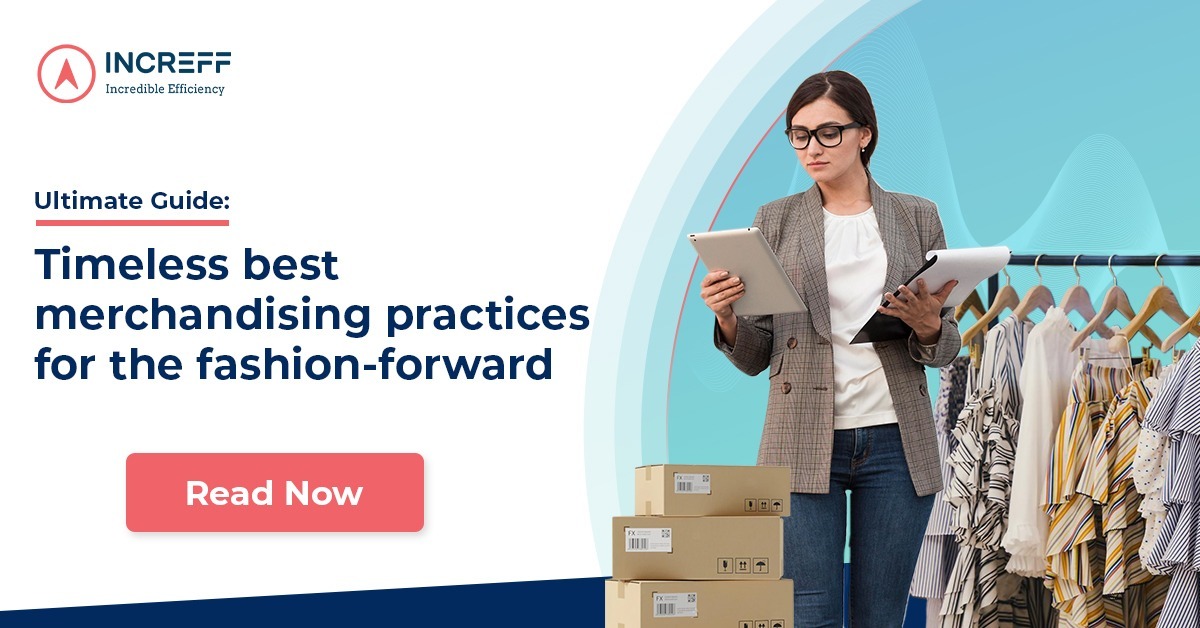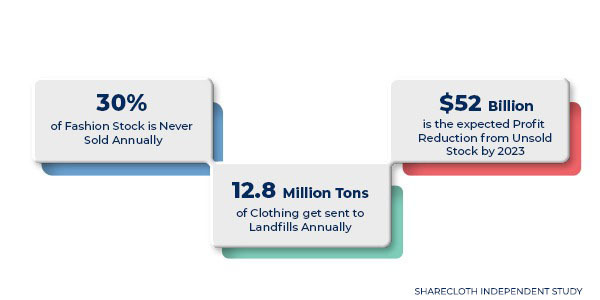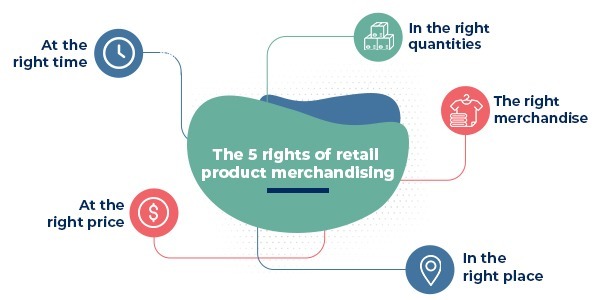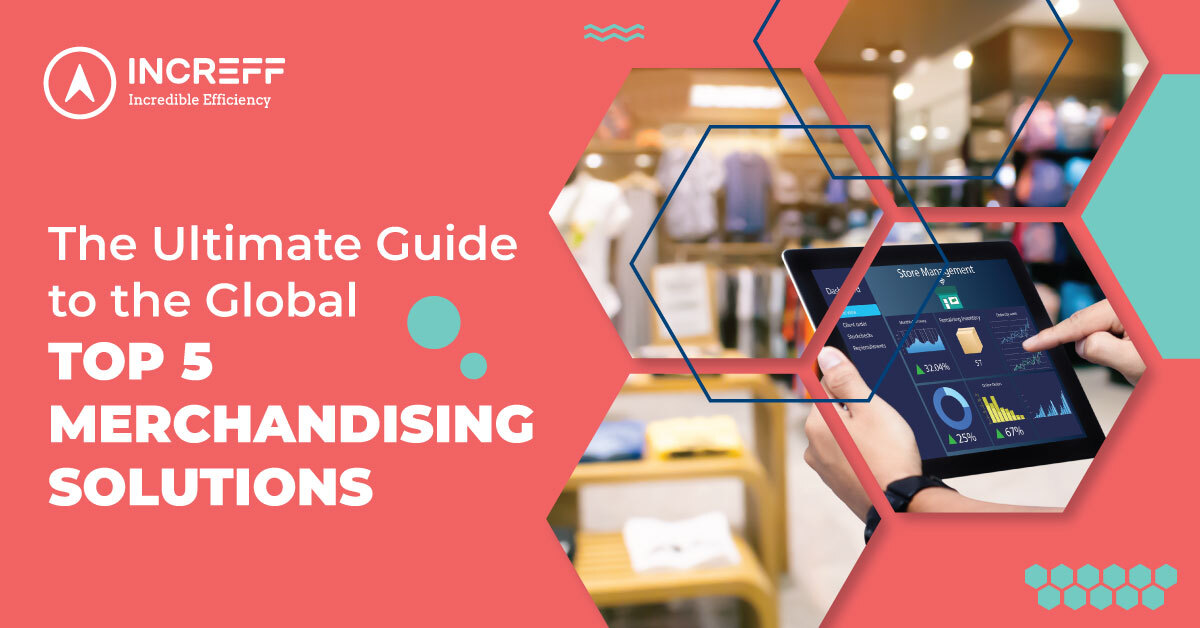
SSmart Merchandising
Timeless best merchandising practices for the fashion-forward
Good merchandising is like a classic wardrobe staple: always in fashion.
Picture this: You walk into a store and immediately feel captivated by the displays, the colors, and the overall aesthetic. You find yourself instinctively drawn towards certain products, feeling as though they were made just for you. This is the magic of merchandising – a carefully crafted experience that delights customers and leaves them coming back for more.
In a world where fashion trends change faster than the seasons, one thing remains constant – the power of great fashion merchandising. It’s the backbone of successful retailers and the secret weapon that keeps them ahead of the curve. But it’s not just about creating a visually stunning display; it’s about anticipating customer needs and delivering an experience that resonates with them on a personal level.
According to a recent study by San Diego State University, failing to get merchandising right could result in a 50% brand switch rate. That’s why a meticulous and thoughtful approach to merchandising is essential. From the placement of products to the use of lighting and colors, every element plays a crucial role in creating a memorable experience for customers.
As mentioned, merchandising is more than just displaying products on a shelf or rack. It’s a complex and nuanced process that requires a deep understanding of consumer behavior, market trends, and retail best practices. It’s about creating an immersive shopping experience that delights and inspires customers while also driving sales and building brand loyalty.
But exactly what is merchandising? At its core, merchandising is both an art and a science. It requires a keen eye for aesthetics, an understanding of product placement, and a flair for creative presentation. But it also demands a data-driven approach, with retailers analyzing sales data, monitoring inventory levels, and adjusting pricing and promotion strategies to optimize revenue. Merchandising also encompasses strategies for managing inventory levels and stock rotation to ensure that products are always available and fresh.
To stay ahead of the curve and stand out from the competition, it’s crucial to keep up with the latest shifts in the retail industry and implement the best merchandising strategies and practices. In this guide, we’ll explore the world of merchandising, from the fundamentals to the latest trends and techniques. We’ll dive into topics such as assortment planning, buying, and allocating, as well as inventory management and more. By the end of this journey, you’ll gain valuable insights that will help you create a memorable shopping experience for your customers and drive revenue for your business. Let’s dive in!
The winds of change in merchandising are picking up speed
Current Scenario

- With inflation rates skyrocketing to levels not seen in decades and consumer confidence taking a hit, managing the fashion industry has become increasingly pricey. The industry is feeling the pinch, and brands are under more pressure than ever to maintain margins and stay profitable in the face of these challenges.
- The accessibility and sharing of product information and trends have caused a significant shift in consumer preferences and behaviors. Consequently, consumers are frequently exposed to fresh ideas and products. As a result, a trend has emerged in which the lifespan of fashion products has notably decreased, causing brands to prioritize newness and innovation.
- Data and insights have become a necessity for brands. They rely on data to comprehend their customers’ preferences, behaviors, and purchasing patterns. Historical data analysis of sales, inventory, and customer feedback data allows brands to develop a more accurate demand forecast, identify emerging trends, and optimize product assortments. Moreover, data-driven insights enable brands to optimize pricing, promotions, and markdowns, ultimately leading to improved margins and profitability.
- Consumers are increasingly conscious of how brands impact the environment and society. Across the globe, 60% of consumers consider sustainability an essential factor when making purchases. Over the past five years, 85% of individuals have modified their buying behavior to be more sustainable, indicating a willingness to change consumption habits and reduce environmental impact.
As a result, brands are under pressure to adopt eco-friendly and sustainable practices, including waste reduction and building a sustainable and responsible supply chain. One in three consumers is willing to pay extra for sustainable products. So, companies must prepare for sustainability to become the norm rather than the exception, making sustainability a ‘climbing agenda.’ (Source: The Global Sustainability Study 2021 survey)
Taking action with the best merchandising practices
Let the data do the talking…
The era where brands relied on intuition and spreadsheets to plan, purchase, and distribute their products is a thing of the past. In today’s data-rich world, retailers can access vast amounts of data to help them make more informed decisions.
By analyzing data, brands make more informed decisions and meet the 5 R’s (… the five rights) of retail product merchandising defined by Paul Mazur:

Let’s take a closer look at how a data-driven approach helps in each step of merchandising process.
Granular data analysis in merchandise planning and buying
What is Merchandise Planning and Buying?
Merchandise planning involves analyzing sales data, market trends, and customer insights to develop a plan that identifies product categories, assortments, and price points. It helps retailers optimize inventory levels, reduce stockouts and overstock, and increase turnover rates.
Merchandise buying executes the plan by selecting and purchasing the right products from suppliers, negotiating pricing and delivery terms, and managing inventory levels to minimize costs and maximize sales.
Retailers incur significant expenses in buying merchandise, including shipping, transportation, delivery, and storage costs. Making incorrect purchasing decisions can result in doubling the merchandise purchasing costs. This is where a data-driven approach helps in merchandise planning.
Recognizing “Never Out of Stock” (NOOS) products is a crucial element of a data-oriented approach to merchandise planning. These are the top sellers and core styles that have persistent sales for a more extended period. By identifying NOOS products, retailers can ensure that these items are always in stock, reducing the risk of stockouts and lost sales.
To achieve ideal decision-making, retailers must perform computations at the granular level, incorporating multiple product attributes such as color, size, style, and seasonality. This level of analysis enables retailers to determine the ideal assortment mix and depth, ensuring that the right products are available in the right quantities at the right time.
Another crucial aspect of data-driven merchandise planning is analyzing past sales, revenue, discounts, size cuts, stock-outs, and exposure.
Benefits of data-driven merchandise plan:
- Decreased warehousing costs: By reducing unwanted inventory in the warehouse, inventory carrying, labor, and maintenance costs are minimized.
- Increased customer loyalty and lifetime value: Having products in stock that meet customer demand makes them less likely to leave empty-handed and will keep returning for more.
- Less discounting: By reducing unsold inventory, there is no need to rely on heavy discounts to clear stock.
- Lower chances of missed sales opportunities: With few out-of-stock situations and stocked best-selling products, retailers can minimize missed sales opportunities that their competitors may capitalize on.
- Smart inventory investment: By analyzing past sales and trends, retailers can make informed decisions about inventory investment and allocate their money to stocks that generate revenue.
Precision stocking: Smart allocation and replenishment
What is Merchandise Allocation and Replenishment?
Merchandise allocation decides the quantity of each product for each store based on sales data, store size, and customer demographics. The goal is to optimize sales and meet customer demand.
Replenishment restocks products in stores that are sold out or running low on inventory to maintain on-shelf availability. It involves analyzing sales data and inventory levels to determine when and how much to restock for each store and product.
Using manual methods and general thumb rules to allocate inventory leads to issues like overstocking, stockouts, and suboptimal inventory health. On the other hand, with a data-driven approach, brands can ensure that inventory is allocated at the right depth, location, and time to maximize sales and improve inventory health.
The benefits include:
- True ROS (Retail On-Shelf Availability) based store style ranking ensures the best store style combinations are fulfilled, increasing sales.
- Optimized inventory distribution by identifying pivotal and non-pivotal sizes for each store and attribute group combination.
- Inter-store transfers and stock consolidation can be performed to correct for the loss of sale, inventory health, and assortment issues.
- Optimum depth for SKUs can be maintained at each store based on True ROS and required days of cover without any minimum or maximum inputs from the user. This approach improves store inventory health and helps avoid stock-outs or overstock situations.
- Suggestions for pullbacks of dead or slow-moving inventory pullbacks from stores to warehouses and replacements with better potential articles. This frees up space for faster-moving items and ensures that the store is always stocked with the latest trends and styles.
- Dispatch collections or stories of styles together to a store, which needs to be displayed together. This creates a cohesive shopping experience and increases the likelihood of multiple purchases.
- Different pools of replenishment quantity can be maintained at the warehouse based on the grade of the style, allowing for the allocation of more inventory to high-performing styles, resulting in increased sales and profits.
Other best merchandising tips and tactics
Effective discounting/markdown optimization
Markdowns are essentially price reductions that retailers offer on their products to clear out old inventory, make room for new products, and maximize profits. However, managing markdowns efficiently is easier said than done. It requires a keen understanding of customer behavior, product performance, and market trends. This is where the data-driven approach comes in.
By analyzing sales data, inventory levels, and customer behavior in real-time, the tool recommends if the discount should be increased, decreased, or kept the same to improve its sales and maximize margin value.
Here are some key benefits of markdown optimization
Maximizing ROI: Markdown optimization tools can help you identify the right set of styles to apply discounts to and the optimal discount percentage for each style for achieving the best possible sales and margin value.
Dynamic adjustments: Markdown optimization tools allow you to make dynamic adjustments to your markdowns based on real-time data. It means you can increase or decrease discounts for specific products and store locations based on their performance and stock status, allowing you to maximize sales and profitability.
Elasticity: Markdown optimization tools also enable rapid rollback on discounting if the rate of sale (ROS) doesn’t increase as expected. This elasticity ensures you can quickly adjust your markdown strategy if you do not see the desired results.
Flexible capping: Markdown optimization tools facilitate the flexible capping of the discount within different decision matrix combinations. This means you can set up different discount caps for different products and store locations based on their performance and inventory levels.
Style-level manual overrides: Finally, markdown optimization tools allow for style-level manual overrides for reordering and discounting decisions. This enables merchandisers to use their expertise and judgment to adjust markdowns for specific products and store locations as needed.
Localization of assortment
The traditional approach to inventory distribution involved having a few large warehouses that served a wide geographic area. However, this model has several drawbacks, including longer shipping distances and transit times, which can result in delayed deliveries and dissatisfied customers. To address this issue, retailers are adopting a new approach that involves building smaller fulfillment centers closer to their customers.
By using a pin code level inventory distribution system, retailers can ensure they have the right products in the right quantities at the right locations. This approach enables them to achieve faster delivery times, reduce shipping costs, and improve customer satisfaction. In addition, retailers can leverage data analytics to identify regional demand patterns and adjust their inventory levels accordingly.
Building a resilient supply chain is another key benefit of bringing fulfillment centers closer to the customer. By having multiple smaller fulfillment centers spread across multiple regions, retailers can mitigate the risk of disruptions caused by natural disasters, labor strikes, or other unforeseen events. This approach also allows them to be more agile in responding to changes in demand and market conditions.
By bringing fulfillment centers closer to the customer, retailers can not only improve delivery times and build a resilient supply chain but also create the phygital experience that customers are seeking right now. This is because it can reduce the distance that products need to travel and minimize inter-warehouse redistributions, resulting in significant savings in logistics costs and reducing the retailer’s carbon footprint.
Bridging the gap with Omnichannel
The traditional methods of allocating merchandise — having separate inventories for each sales channel, can no longer keep up with the fast-paced demands of the industry and can result in obsolete inventory, heavy discounts, or, worse, landfill dumping of unsold products. These challenges not only harm the environment but also hurt the bottom line of businesses.
The concept of Omnichannel seeks to deliver this experience by unifying the entire retail ecosystem, breaking down silos between online and offline channels, and creating a cohesive and integrated customer journey. At the heart of this transformation lies inventory management. By integrating online and offline inventory, retailers can create a unified view of their stock levels, which allows them to offer customers the convenience of shopping across multiple channels and access an endless aisle of products, even if they are not physically available in-store. This feature enhances the customer experience by providing more options and reducing the likelihood of customers leaving the store empty-handed.
Another advantage of an omnichannel inventory system is the ability to offer omnichannel capabilities such as BOSS (Buy Online Ship to Store), BOPIS (Buy Online Pickup in Store), and BORIS (Buy Online Return In-Store). These options provide customers with the flexibility to choose the most convenient way to shop and return items while enabling retailers to leverage their physical stores as fulfillment centers.
By leveraging inventory as a strategic asset and integrating online and offline channels, retailers can provide a seamless shopping experience, increase sales, reduce waste, and improve their bottom line.
Newer Possibilities with AI-powered Merchandising
The possibilities of artificial intelligence (AI) technology are limitless, and it has found a new ally in merchandising. AI has become an indispensable tool for retailers, offering a plethora of benefits ranging from personalized recommendations to fraud detection. Its vast and varied applications make it an essential asset for any brand seeking to stay ahead of the curve in today’s competitive retail landscape.
A few use cases of AI in merchandising include
- Personalization: AI analyzes customer data to provide personalized product recommendations and promotions, leading to increased customer engagement, loyalty, and sales.
- Forecasting: AI predicts future demand based on historical sales data and market trends, aiding in inventory management and allocation decisions.
- Pricing optimization: AI determines optimal product pricing by analyzing competitor pricing, consumer demand, and other market factors, increasing sales and profitability while remaining competitive.
- Fraud detection: AI analyzes transaction data to identify fraudulent activity patterns, helping retailers prevent losses from fraudulent transactions.
The ball is in your court…
Brands that can tailor their strategic priorities to their specific situation will have the best chance of adjusting their business models to deal with current challenges. They will also be able to use these strategies to create a more flexible and adaptable merchandising capability that not only helps them weather the downturn but also positions them well for growth when it returns. But how does Increff help?
Bringing Science to Retail – Increff Merchandising Software
Reimagine merchandise planning, buying, and allocation with Increff’s intelligent algorithm-driven end-to-end merchandising software
Assortment Planning: Consider factors like seasonality, local demographic, product attributes, discounting, ,etc. to identify top sellers and slow movers. Personalize assortment at every store based on true demand for options, depth, and size ratios.
Allocation and Replenishment: Allocate inventory, as per demand, and improve the frequency of replenishments through our ARS solution. Experience consistent revenue uplifts by reducing size cuts, replenishing fast-selling styles, and optimizing overstocking and understocking within stores through inter-store transfers.
Extract actionable insights with business intelligence and online analytics.
What can you expect:
- 1.5x increase in inventory turns
- 4-5% improvements in the bottom line and margins
- 15% growth in full-price sell-through
- 10% savings in logistics
- 20% cutback in inventory holding
16 May, 2023
RRegional Utilization
Riding the E-commerce Wave: Prepping for Peak Season…
The holiday season is the busiest time of the year for e-commerce brands. With the…
30 October, 2023
6 months agoSSmart Merchandising
Mastering Demand Forecasting: A Comprehensive 7-Step Roadmap to…
Amazon, the massive online retailer, rakes in significant profits in North America because numerous local…
25 September, 2023
7 months agoSSmart Merchandising
Top 5 Merchandising Solutions: Global Leaders in Enabling…
Have you ever considered the intricacies of managing a fashion brand across both retail and…
5 September, 2023
8 months ago



